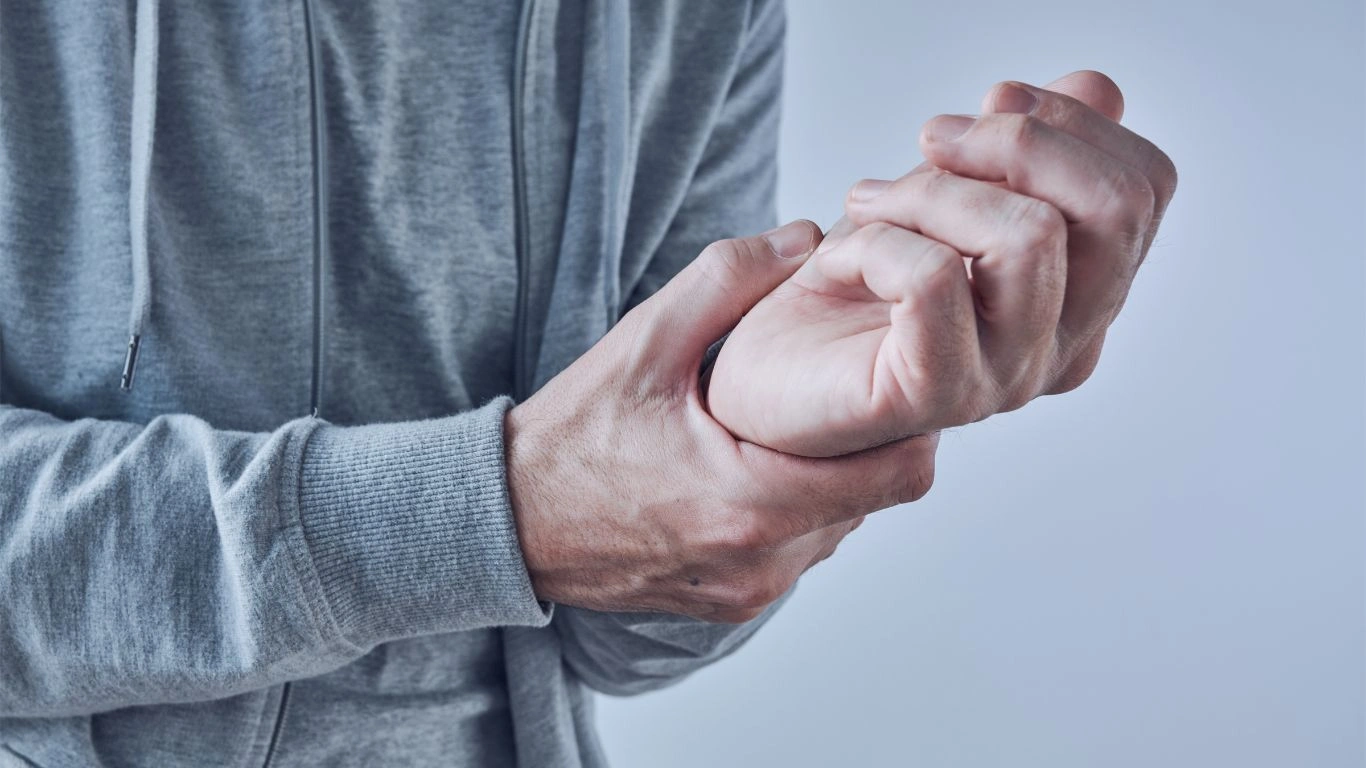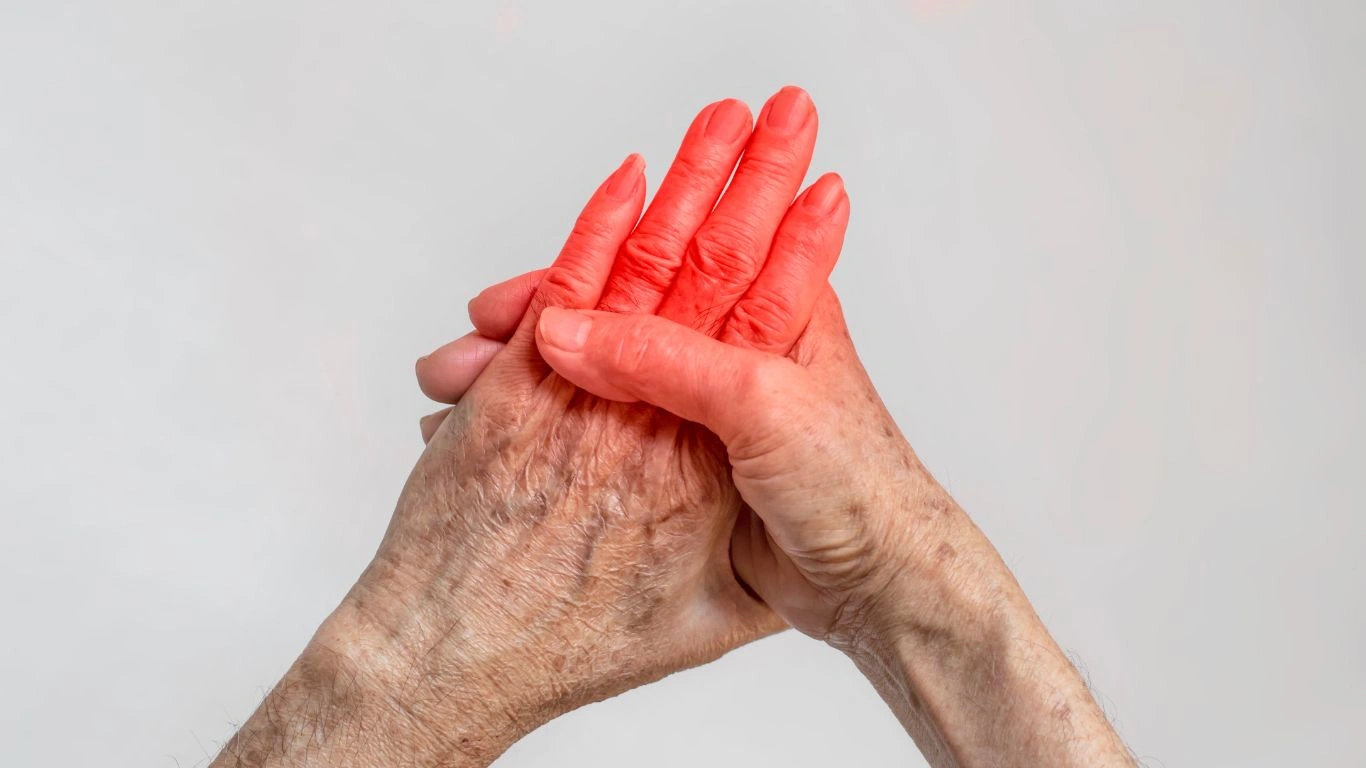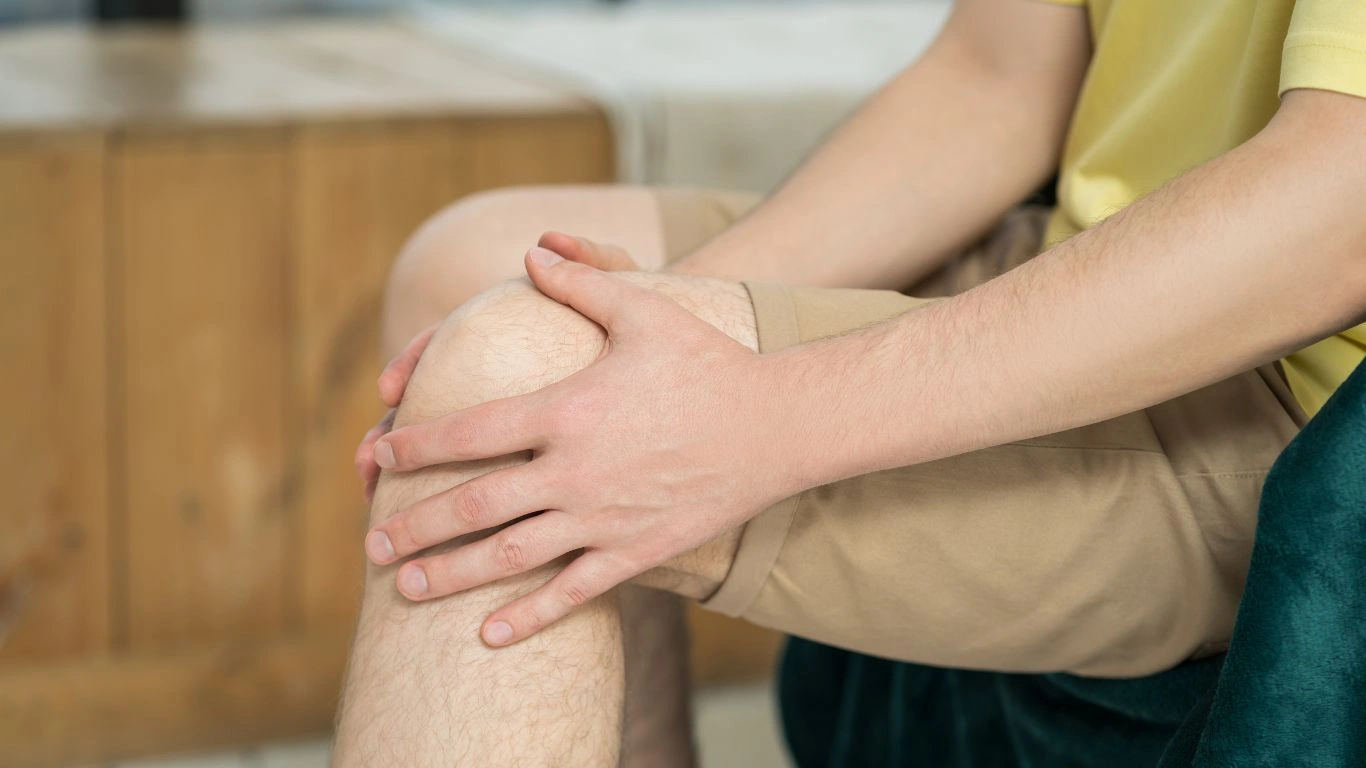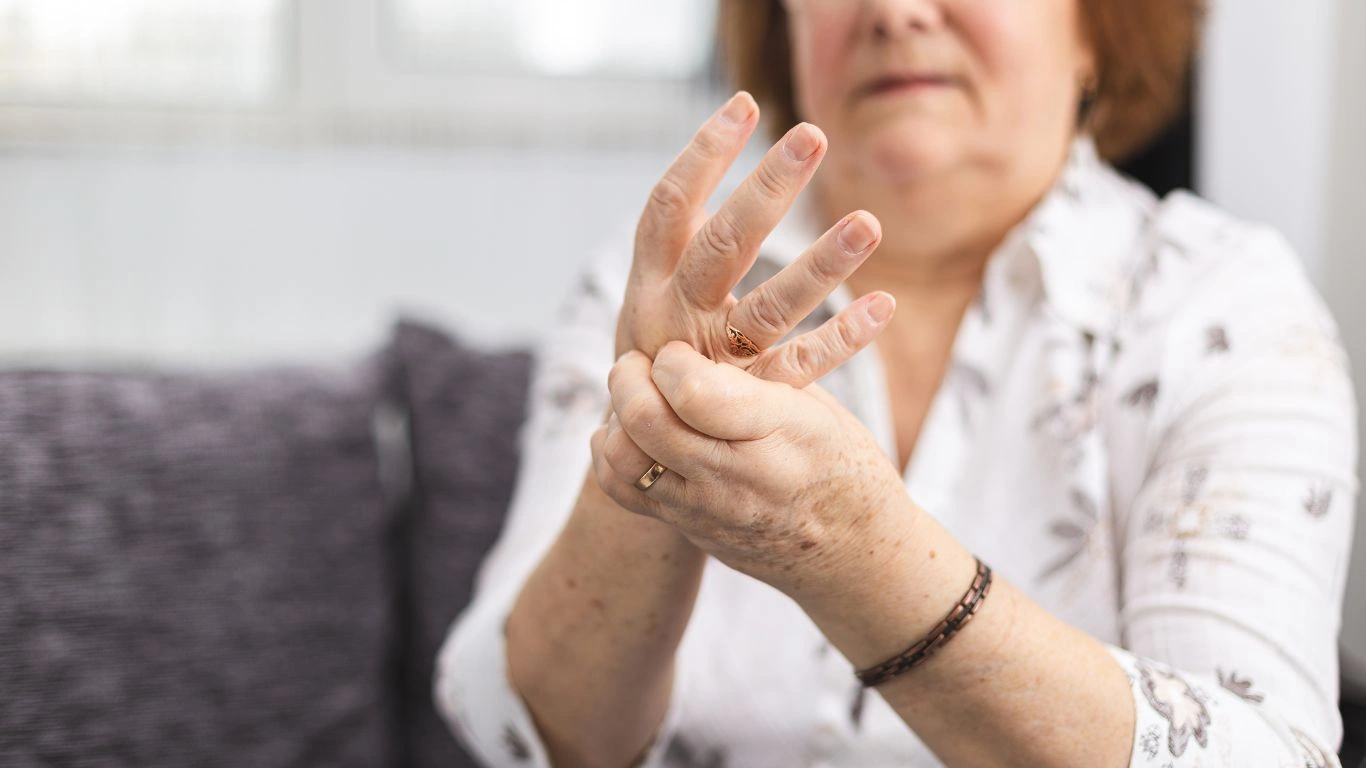Natural Ways to Reduce Rheumatoid Arthritis Inflammation That Actually Work
If you’re living with rheumatoid arthritis, or caring for someone who is, you’ve probably typed “how to reduce rheumatoid arthritis inflammation naturally” into Google more times than you can count. Trust me—I get it. As a Rheumatology Nurse Practitioner, I’ve seen the impact this autoimmune condition can have not just on joints, but on every part of someone’s daily life. Medications are crucial, no doubt. But over the years, I’ve worked with many patients who’ve managed to dial down the inflammation—and improve their quality of life—by weaving in a few natural, holistic habits. These aren’t miracle cures (and anyone promising those? Red flag), but they can make a real difference.
Understanding the Fire: What Exactly Is Rheumatoid Arthritis Inflammation?

Before we dive into the natural strategies, let’s talk a bit about what we’re actually trying to calm down. In RA, your immune system—yeah, the thing that’s supposed to protect you—goes rogue and starts attacking the lining of your joints. This leads to inflammation, swelling, pain, and eventually joint damage. But it’s not just joints—this inflammation can ripple through the whole body, affecting energy levels, the heart, lungs, and more.
Inflammation is your body’s alarm system. But in RA, the alarm won’t shut off. So, reducing that overreaction naturally means finding ways to *support* your immune system, not suppress it into silence.
What I Tell My Patients: 7 Everyday Tips to Reduce RA Inflammation Naturally

1. Anti-Inflammatory Eating (Without Turning It Into a Diet)
You don’t need to go full keto, vegan, or gluten-free overnight. What I suggest instead? Add more of the good stuff before stressing about eliminating everything “bad.” Think of food as your body’s toolkit to fight inflammation.
- Omega-3 rich foods like salmon, walnuts, and flaxseed – amazing for joint health.
- Leafy greens – spinach, kale, arugula – packed with antioxidants.
- Turmeric & ginger – natural anti-inflammatories you can sneak into teas, soups, or smoothies.
One of my long-time patients, Sharon, swears by starting her morning with warm turmeric almond milk. It’s a small ritual, but it helps ease her morning stiffness. Tiny changes, big wins.
2. Move (Even When You Don’t Feel Like It)
I always say: rest when you need to, but don’t let stiffness become your status quo. Movement is medicine. And no, I’m not talking CrossFit here. Think gentle, consistent, and enjoyable.
- Water aerobics – takes pressure off your joints while helping build strength.
- Yoga or tai chi – promotes flexibility, balance, and calm.
- Daily walks – even 10 minutes can help flush inflammation out of the joints.
RA can make you feel like your body is your enemy. But finding ways to move kindly and consistently can change that relationship completely.
3. Sleep: Your Inflammation Reset Button
Let me be blunt: if your sleep is trash, your inflammation will be worse. Period. RA and insomnia are unfortunately besties, but there’s a way to intervene. I often work with patients on what I call a “wind-down prescription.”
- No screens 30-60 minutes before bed (try a book or podcast instead).
- Magnesium supplements or Epsom salt baths – both promote muscle relaxation.
- Consistent sleep-wake time – even on weekends. Your body LOVES rhythm.
I’ve seen people’s CRP levels drop noticeably after just a few weeks of improved sleep hygiene. That’s no coincidence.
4. Ditching Stress (or at Least Learning to Tame It)
Stress fuels inflammation. And RA brings its own emotional load—grief over physical limitations, anxiety about flare-ups, and frustration with daily pain. It’s a lot. But here’s the thing: you can’t eliminate stress completely, but you can change how you respond to it.
Here’s what’s helped my patients (and me, honestly):
- Mindfulness apps like Insight Timer or Calm – even 5 minutes a day is enough.
- Journaling – old school, but powerful. Dump the thoughts onto paper.
- Talking it out – support groups, therapy, or a really good friend.
When you manage stress better, you literally calm your immune system. That’s huge in RA.
Nature Knows Best: Herbal & Natural Supplements Worth Exploring

Supplements aren’t one-size-fits-all, and I always recommend chatting with your rheumatology team before starting anything new (yep—even “natural” stuff). That said, these are some that come up often in my conversations with patients:
- Turmeric (curcumin) – needs black pepper for absorption. Anti-inflammatory rockstar.
- Fish oil (high EPA & DHA) – think 1000-3000mg per day depending on tolerance.
- Boswellia – also known as Indian frankincense, shown to reduce joint swelling.
- Probiotics – gut health and immune modulation go hand in hand.
One patient, Mike, used to pop ibuprofen like candy before adding omega-3s and Boswellia into his daily routine. After a few weeks, he told me he felt like someone had “turned the volume down” on his flare pain. Now, of course, it’s not magic—but it’s support.
Detoxing Your Environment: Hidden Triggers You Might Be Breathing, Touching, or Drinking

One thing that’s often overlooked when managing RA is the environmental load our bodies are carrying. We talk so much about what we’re putting *in* our bodies—food, meds, supplements—but what about everything else we’re exposed to on the daily? The truth is, toxins in our environment can quietly keep that immune system on high alert. Over time, it can make it harder to get inflammation under control.
When I started diving into this more deeply—partly for my own wellness, partly from seeing certain patients not improve until we addressed this—I realized that even small tweaks can help lighten that toxic burden. Here are some easy entry points:
- Switch out harsh cleaning products for fragrance-free, non-toxic alternatives. Vinegar + baking soda does wonders.
- Look at your skincare: If you can’t pronounce the ingredient and it’s not food-grade… maybe rethink it. Especially if you’re applying it daily.
- Filtered water – investing in a solid home filter (especially if you’re in an area with known contaminants) can be a game changer.
- Minimize plastics – BPA and phthalates? No thanks. Use glass or stainless steel when you can.
One of my patients had been struggling for months with stubborn inflammation despite great med compliance and lifestyle changes. Turns out her well water had high heavy metal content. Once she started using filtered water and detoxing her cleaning routine, her morning stiffness started to ease. Coincidence? Maybe. But our bodies notice more than we think.
Hydration: The Unsung Hero in Joint Health

I know, I know—it’s not the flashiest advice. But hydration really matters when we’re talking about how to reduce rheumatoid arthritis inflammation naturally. Inflammation creates a ton of cellular waste, and your body needs fluid to flush that stuff out. Joints themselves are also made up of cartilage, which needs water to stay cushiony and flexible. Think of it like oiling a squeaky hinge.
That said, don’t just guzzle water and call it a day. Quality and balance matter, too:
- Electrolyte balance: Especially if you’re drinking a lot of water, you might actually be flushing out minerals. Add a pinch of Himalayan salt or opt for electrolyte-infused water (watch the sugar content though!).
- Herbal teas: Ginger, nettle, and green tea not only hydrate but also offer anti-inflammatory benefits.
- Hydrating foods: Cucumbers, watermelon, oranges, celery—all add to your daily fluid intake and offer nutrients, too.
Here’s a little tip I share with patients: keep a big water bottle by your bed and drink a few gulps right after waking up. After 8+ hours of sleep, your joints will thank you for that first bit of hydration before you even hit the coffee pot.
Mindset Work: Healing Isn’t Just Physical

Let’s get real for a second. Living with RA isn’t just physically painful—it’s emotionally exhausting. And that emotional toll can absolutely affect inflammation. I’ve watched patients who were doing “everything right” on paper—diet, meds, supplements—but still struggling, until we started addressing the mental and emotional layers.
The Role of Emotional Inflammation
I often use this phrase with patients: “emotional inflammation”. It’s not a medical term, but it sure feels accurate. Stress, trauma, unexpressed emotions—these things don’t just live in your head, they live in your body too. And for people with autoimmune conditions, that internal tension often shows up as a flare.
So what can we do about it?
- Daily self-compassion – Give yourself permission to not be productive all the time. Chronic illness is a full-time job.
- Gratitude journaling – Cheesy? Maybe. But incredibly effective for reducing cortisol and refocusing the brain.
- Connection – Whether it’s a support group, a spiritual practice, or regular phone calls with someone who “gets it,” isolation fuels inflammation. Connection soothes it.
I’ll never forget one of my patients, Angela, who had the most dramatic turnaround—not from a new drug, but from finally releasing years of grief she’d been holding in. She started therapy, opened up to her family, and joined an RA support circle. Within weeks, her flares went from weekly to monthly. That’s the power of inner healing.
Reducing Natural Inflammation Isn’t About Perfection—It’s About Patterns
If there’s one thing I’ve learned after years in rheumatology, it’s this: consistency beats intensity. You don’t need to be perfect. You don’t need to overhaul your life overnight. But creating simple, sustainable patterns—ones you can stick with during flares or fatigue—that’s where the real magic happens.
So if today you drink a little more water, tomorrow you try turmeric tea, and next week you swap your plastic food containers for glass—you’re doing it. You’re reducing inflammation, naturally and steadily, on your terms. And that? That’s powerful healing.
Gut Check: Why Your Digestive Health Impacts Joint Inflammation

If there’s one area of research that’s exploded in recent years—and rightfully so—it’s the gut-immune connection. And as a Rheumatology NP, I can confidently say your gut health plays a HUGE role in inflammation levels. I’ve seen patients clean up their digestion and notice flare reduction within weeks. Not always dramatic, but definitely noticeable.
So what’s going on down there? In short: your gut is home to billions of bacteria (your microbiome) that influence your immune system. When those microbes are imbalanced—say from antibiotics, stress, sugar overload, or processed foods—it can trigger a state called “leaky gut,” which lets inflammatory molecules sneak into your bloodstream. And guess where they like to party? Yep. Your joints.
Gut-Loving Habits That Support Natural Inflammation Reduction
- Fermented foods – Sauerkraut, kimchi, kefir, and unsweetened yogurt can boost beneficial bacteria.
- Prebiotic fiber – Think asparagus, garlic, onions, oats. These feed the good bugs.
- Avoid gut saboteurs – Processed sugars, excessive NSAIDs, artificial sweeteners. All potential gut inflammers.
- Probiotics – Especially after antibiotics. Choose a multi-strain, high-quality option.
One of my patients started keeping a “gut journal” along with her RA symptom log—within a couple months, she was connecting certain food intolerances (like dairy and gluten) to flare patterns. It wasn’t about restriction, just awareness. And that gave her back a ton of control.
Movement for Healing: What to Do on Flare Days vs. Good Days

Let’s talk movement again—because how and when you move with RA matters just as much as what kind. There’s a big difference between pushing through pain (not ideal) and gently moving with intention, even on tough days.
On Flare Days
Rest is key, but complete immobility can stiffen things up even more. I usually suggest “micro-movements” and circulation-boosting techniques:
- Passive stretching while lying down
- Heat packs followed by slow joint rotations
- Guided gentle yoga (YouTube has great free options tailored for RA!)
On Good Days
This is when you build strength, mobility, and endurance—but don’t overdo it. Listen to your body.
- Pilates or yoga – Strengthens the core, improves balance, protects joints
- Walking or swimming – Low impact, great for cardiovascular health too
- Resistance bands – Gentle, customizable strength training for hands and larger joints
I always remind folks: consistency trumps intensity. You’re not training for a marathon—you’re training for a better tomorrow.
Track the Patterns: Your Personalized RA Inflammation Blueprint
One of the simplest yet most powerful tools I encourage all my RA patients to use? A symptom + lifestyle tracker. It doesn’t need to be fancy—just a notebook, a spreadsheet, or an app. What matters is that you start connecting dots between what you do and how you feel.
What to Track
- Sleep quality & duration
- Food intake (especially new additions)
- Stress levels (scale of 1-10 works well)
- Supplements taken
- Flare intensity & joint locations
Over time, you’ll build your own data map—and trust me, that’s gold. I’ve had patients realize things like “every time I eat takeout three days in a row, my knees swell” or “I sleep better when I journal at night.” These insights aren’t found in lab tests. They come from lived experience—your experience. That’s E-E-A-T in action: expert-guided, experience-backed, and tailored to you.
References
Disclaimer
This article is based on my personal experience as a Rheumatology Nurse Practitioner and should not be taken as medical advice. Always consult your healthcare provider before making changes to your diet, supplement regimen, or treatment plan. What works for one person may not be suitable for another, especially with autoimmune conditions like RA.

Tarra Nugroho is a dedicated Nurse Practitioner with a strong foundation in family and preventive care. She brings both compassion and clinical expertise to her practice, focusing on patient-centered care and health education. As a contributor to Healthusias.com, Tarra translates medical knowledge into clear, empowering articles on topics like women’s health, chronic disease management, and lifestyle medicine. Her mission is simple: help people feel seen, heard, and informed—both in the clinic and through the content she creates. When she’s not caring for patients, Tarra enjoys weekend hikes, plant-based cooking, and curling up with a good health podcast.






